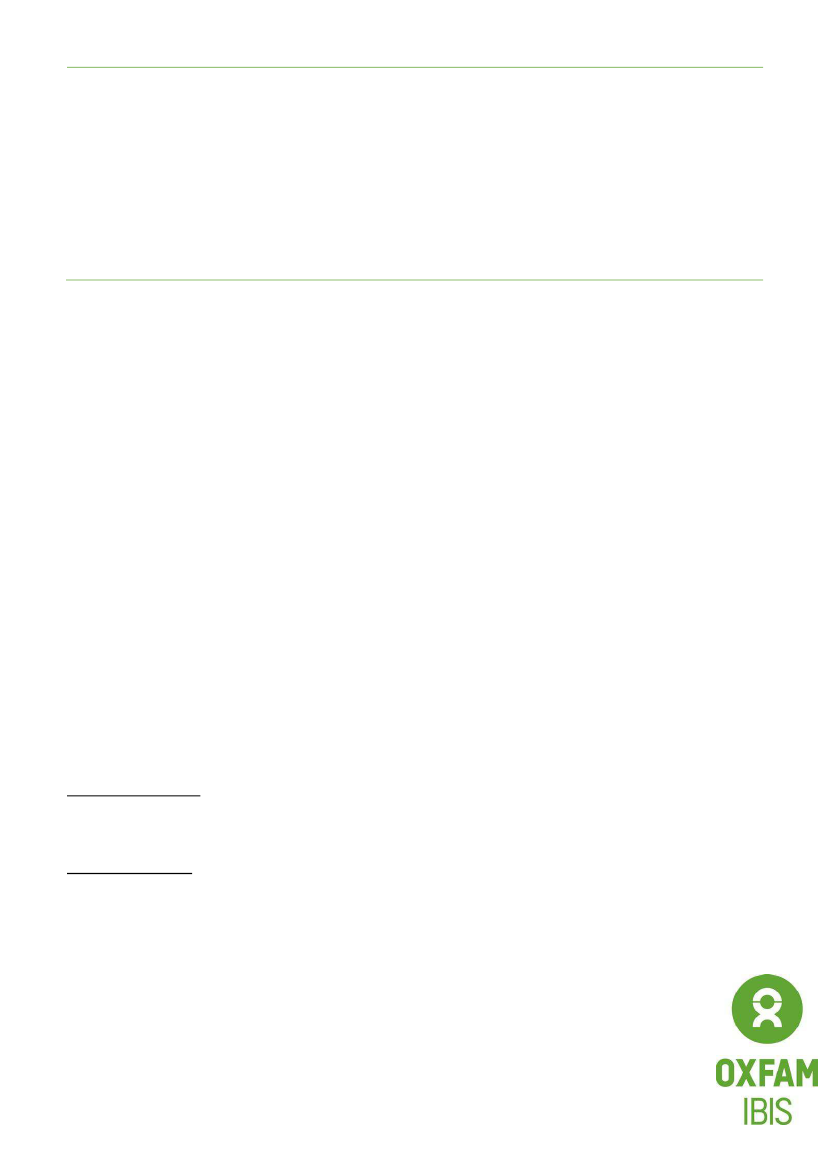
JANUARY 2019
OPPORTUNITIES FOR MORE
EFFECTIVE DANISH ENGAGEMENT
Foretræde for FOU, Oxfam IBIS
Oxfam IBIS seeks to provide a foretræde briefing on the topic of “Oppor-
tunities for more effective Danish engagement in conflict and fragile
stings”.
The
briefing
will
have
two
focus
areas.
1) Examining comparative approaches to military export control and op-
portunities for strengthening Parliamentary and Ministerial oversight in
this regard. Such options include strengthening end-user documentation
and approval, establishing a list of countries eligible to receive Danish
military exports, transferring decision-making power and licensing author-
ity to Ministerial level, and strengthening Parliamentary oversight and
review of transfers and policy. The document in Annex 1 provides further
details. This will also examine areas where existing Danish law can be
further strengthened in line with the EU Common Positions on Military
Exports.
2) Ways in which Denmark can more effectively and coherently engage
in conflict and fragile settings, including through greater emphasis and
support to civilian-led peacebuilding. This portion of the briefing will pre-
sent empirical argument highlighting the cost-effectiveness and sustaina-
bility of such approaches, as opposed to sole focus on military-led re-
sponses to stabilization. This portion of the briefing will draw attention to
the changing nature of conflict, while also highlighting practical steps that
be taken by Denmark to adapt its existing foreign policy instruments to be
able to effectively address the underlying causes of conflict. The docu-
ment in Annex 2 provides further details.
Contact Information:
Alex Shoebridge
Peacebuilding Advisor, Oxfam IBIS
91526562
www.oxfamibis.dk